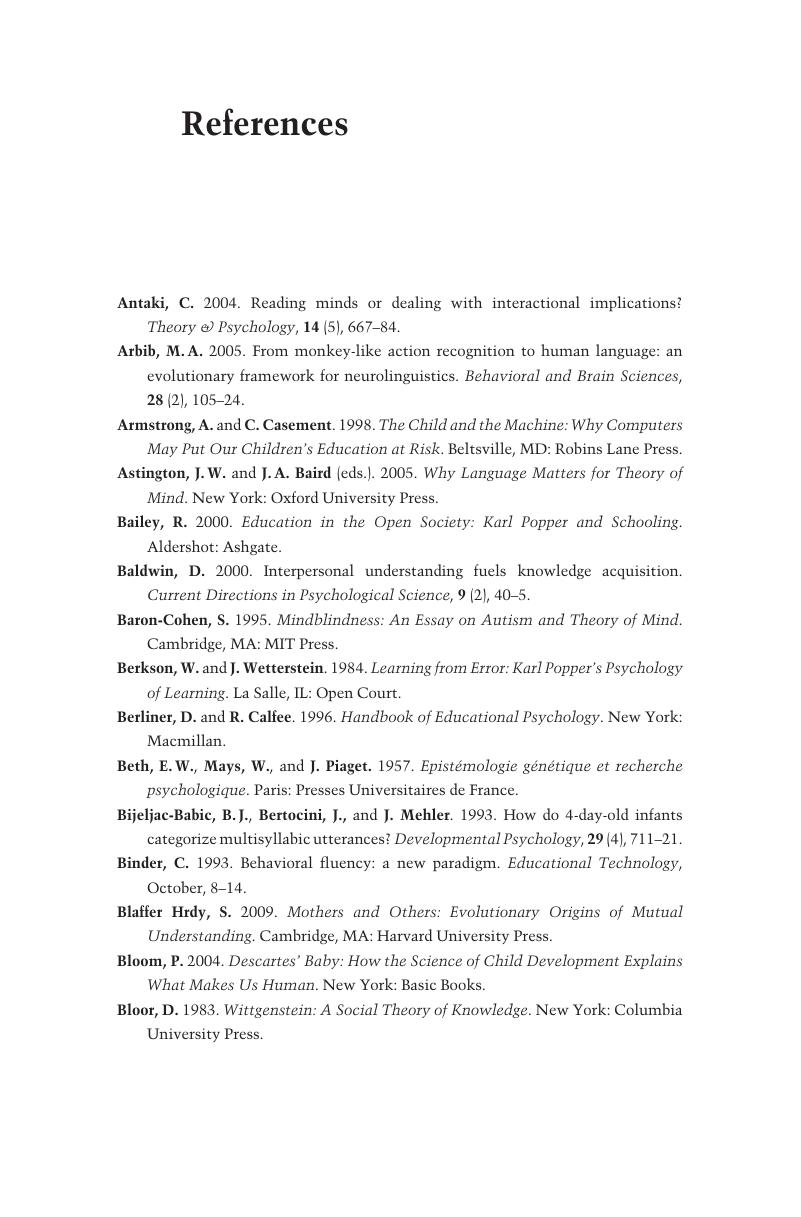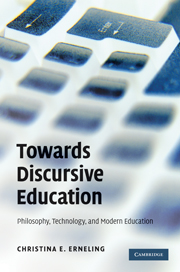Book contents
- Frontmatter
- Contents
- Acknowledgements
- Introduction
- 1 The infantilisation of learning
- 2 Educational technologies and pedagogy
- 3 Piaget and natural learning
- 4 Piaget's conception of the framework: from instincts to intentionality
- 5 The infant as scientist
- 6 The socio-cultural approach to learning
- 7 Towards discursive education
- Appendix
- References
- Index
- References
References
Published online by Cambridge University Press: 05 June 2012
- Frontmatter
- Contents
- Acknowledgements
- Introduction
- 1 The infantilisation of learning
- 2 Educational technologies and pedagogy
- 3 Piaget and natural learning
- 4 Piaget's conception of the framework: from instincts to intentionality
- 5 The infant as scientist
- 6 The socio-cultural approach to learning
- 7 Towards discursive education
- Appendix
- References
- Index
- References
Summary

- Type
- Chapter
- Information
- Towards Discursive EducationPhilosophy, Technology, and Modern Education, pp. 183 - 194Publisher: Cambridge University PressPrint publication year: 2010



